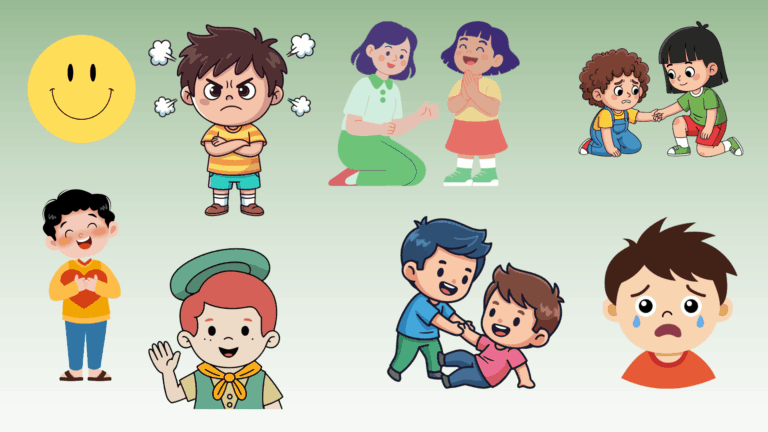In the intricate dance of human interaction, conflict is an unavoidable rhythm. Whether within families, workplaces, communities, or between nations, conflict emerges when differing interests, values, or perceptions collide. While conflict itself is not inherently destructive, the way it is handled determines its outcome—either constructive growth or lingering animosity.
Central to navigating these challenges is empathy: the capacity to understand and share the feelings of another. Behavioral science, with its multidisciplinary exploration of human conduct, has extensively studied how empathy functions in interpersonal and group dynamics.
What has emerged is a compelling case for empathy as not only a soft skill but a transformative tool in resolving disputes and fostering cooperation.
Empathy allows individuals to perceive another’s emotional experience, bridging cognitive gaps and dissolving barriers of misunderstanding. It facilitates not only compassion but clarity—a crucial element when tensions are high and communication frays.
Unlike sympathy, which observes suffering from a distance, empathy involves immersion into another’s emotional state. Behavioral science underscores that this emotional resonance often shifts the tone of conflict from adversarial to collaborative.
Educational Pathways Toward Empathetic Leadership
The development of empathetic skills is not confined to innate temperament or early life experiences; it can be cultivated through structured education. Pursuing academic knowledge in human behavior offers individuals the chance to explore the mechanisms behind conflict, communication, and emotional regulation.
Higher education programs grounded in behavioral theory foster analytical thinking about social structures and interpersonal dynamics. Among these, online social science degrees offer a flexible yet rigorous path to understanding how individuals function within complex social systems—insight that directly informs conflict resolution strategies.
Such degrees delve into psychological, sociological, and anthropological frameworks, emphasizing the layered nature of human interactions. By studying real-world case studies and theoretical models, learners develop a nuanced appreciation for how factors like identity, power dynamics, and cultural norms influence conflict.
Furthermore, these programs often incorporate modules on emotional intelligence, negotiation, and group behavior—foundations upon which empathetic leadership is built. The accessible nature of online platforms enables diverse individuals, including working professionals, to integrate this knowledge into their everyday roles, enhancing how they mediate disputes and foster inclusive environments.
The Science Behind Empathetic Responses in Conflict

Behavioral science identifies empathy as comprising two interlinked components: cognitive empathy and affective empathy. Cognitive empathy involves understanding another person’s perspective or mental state. Affective empathy, on the other hand, is the capacity to emotionally resonate with that person’s feelings. These elements operate in tandem during conflict resolution, especially when each party feels unheard or misunderstood.
Neuroscientific research points to the activation of mirror neurons in the brain as the physiological basis for empathetic response. When observing another person’s distress or joy, these neurons create internal simulations, allowing individuals to experience an echo of what the other person feels. This neurological mirroring fosters a deeper connection and reduces the psychological distance that fuels antagonism.
Empathy in Negotiation and Mediation Contexts
In formal mediation processes, empathy functions as a conduit for trust. Mediators trained in empathetic listening can de-escalate volatile discussions by validating emotions without affirming blame. This subtle balance—acknowledging someone’s pain while maintaining neutrality—is instrumental in rebuilding fractured dialogues. Behavioral science suggests that when parties feel emotionally acknowledged, they become more open to compromise. The desire to “win” softens, and a shared commitment to resolution emerges.
Negotiators who employ empathetic tactics also tend to uncover underlying interests that might otherwise remain concealed. For instance, what appears as a dispute over resources may in fact be a plea for recognition or security. Empathy allows negotiators to listen beneath the surface, revealing hidden motivations and fears. By attending to these emotional undercurrents, resolutions become more sustainable, as they address root causes rather than surface symptoms.
Group Dynamics and Empathy’s Ripple Effect
Empathy is not only an individual trait but a cultural one. In organizations or communities where empathetic behavior is modeled and rewarded, conflict is less likely to escalate into dysfunction. Behavioral science examines these phenomena through group dynamics and social norms. When group leaders demonstrate empathy during disputes, they signal a standard of behavior that others emulate. This creates a psychological environment of safety, in which individuals feel seen and heard.
Furthermore, studies reveal that empathy spreads through emotional contagion. When one person in a group expresses understanding, others are more likely to mirror that response, creating a ripple effect. This emotional synchrony reduces hostility and increases cooperative behavior, especially in high-stress or high-stakes settings.
The Challenges and Misconceptions About Empathy in Conflict

Despite its benefits, empathy is not a cure-all. Behavioral scientists caution against “empathy fatigue,” especially in caretaking professions or environments of chronic conflict. Over-identification with another’s emotions can lead to burnout or blurred boundaries. Thus, empathy in conflict resolution must be balanced with self-awareness and emotional regulation. Effective empathetic practice involves maintaining one’s emotional center while tuning into another’s perspective—a form of engaged detachment that requires skill and discipline.
Additionally, there is a risk of biased empathy, where individuals find it easier to empathize with those who resemble them in background or belief. This selective empathy can inadvertently exacerbate conflict by reinforcing in-group favoritism and out-group exclusion.
Behavioral Applications in Real-World Conflict Management
Empathy’s power is not confined to theory; it plays a crucial role in conflict resolution across multiple real-world sectors. In healthcare, patient complaints are often mitigated when providers listen empathetically and acknowledge distress. In corporate environments, HR managers who approach disputes with emotional attunement report faster de-escalation and better long-term employee engagement.
Military and diplomatic negotiations increasingly rely on emotional intelligence training, which includes modules on empathy. In situations of prolonged ethnic or political conflict, facilitators use narrative-sharing exercises to humanize opposing sides. These methods have been documented to soften entrenched hostilities and build incremental trust over time.
Empathy, then, is not an abstract ideal but a behavioral imperative. It alters the emotional climate in which conflicts unfold, reducing the psychological distance that so often breeds hostility. Its presence opens channels of communication that would otherwise remain closed, giving rise to resolutions that are not only peaceful but just.


















